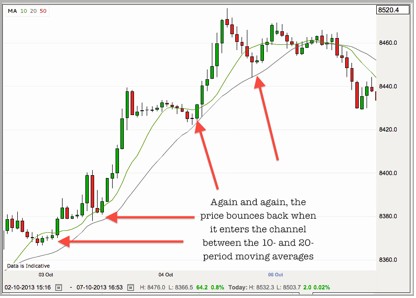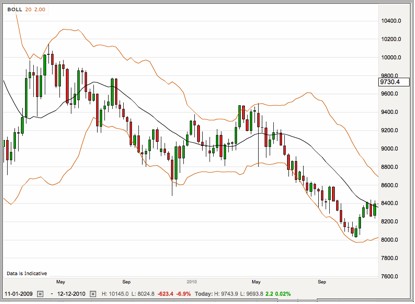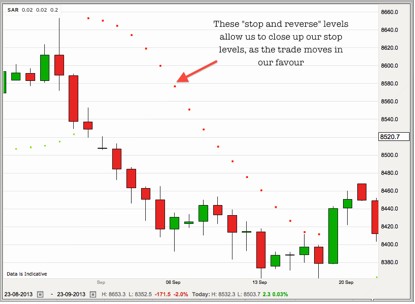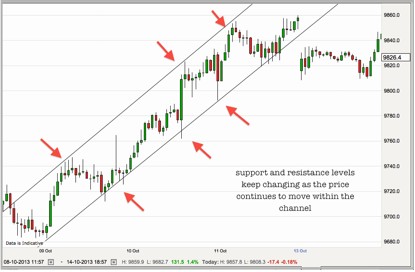 (*Don’t worry, it’s not a complicated as it sounds!)
(*Don’t worry, it’s not a complicated as it sounds!)
I love watching my little boys play football for the local village team on a Saturday morning.
I’m awed by the patience of their coach, who sits them down each week to talk to them about not being drawn to the ball – about the acre of space that none of them have noticed; about timing their runs; playing into space…
Then again, next week, the same kids are chasing a ball around a pitch… or, if they have found a space, they’ve generally forgotten what they’re doing there and decided to use the quiet time to adjust their socks or pick their nose…
I generally try to keep my mouth shut on the subject of ‘football advice’ for fear that I’d easily slip into the role of a pushy dad on the touchline, but even I’ve been drawn into suggesting that they watch the ball… and maybe think about where they ought to be on the pitch…
But I know how tough it is to predict what’ll happen next, and to ensure you’re best placed to deal with what’s thrown at you.
It’s what I’m trying to do in the markets day in, day out…
The simplest way is to have fixed parameters, and to stand firm. It’s tougher to watch your trades unfold, and to react to what’s happening in the markets during your trades, and adjust your parameters as you go…
This style of trading is difficult, because it’s easy to become undisciplined with it, and to just run around blindly chasing after profits, doing things like moving your stops out or closing early…
But I want to show you some ways you can adjust your open trades to the market, without compromising discipline.
This will allow you to trade more dynamically – reacting to what the price is doing, and repositioning yourself accordingly.
What levels are for…
In trading, we often talk about going against the crowd or about being ahead of the crowd.
Personally, I’m not one for contrarian investing. I think there’s easier money to be made from trading in the direction of a trend.
But it’s still vital to not be at the back of the queue, jumping on a trend just as sentiment is turning.
So, if we want to be ahead of the crowd (or at least in the first half of the queue), it’s vital to be aware of what other traders are thinking…
Sure, we can look at an up-trending market, and see that ‘the crowd’ is bullish. But we want to know just how bullish they are: when will they be thinking of selling?
This knowledge is what allows us to put our targets and stops on the right side of a support/resistance level; allows us to get into a breakout at the beginning, instead of the end; and to know when the market has genuinely turned, rather than just toying with us.
Judging what the crowd is thinking – all comes down to drawing levels on our charts.
In Market Maven I’ve spoken at great length about drawing up historical support and resistance – and about how important these levels are.
But, if there’s one thing that’s better than a support/resistance level it’s a dynamic support and resistance level!
Static levels
Static support and resistance levels do not move as time passes. They will always be horizontal lines, be they historical S&R levels, or Fibonacci levels, or pivot points.
You can find more details about these kind of levels in previous emails, here:
But today I want to look at dynamic levels…
Dynamic support and resistance levels don’t just sit there, waiting for the price to come to them!
Instead, they’re watching what the price is doing, and they are reacting, repositioning themselves accordingly. But, just like players on a field, there’s only so far you reposition yourself, before you have to plough in and take action.
First off, let’s consider what we’re using these levels for. Presumably, it’s to aid us in positioning our profit targets and our stop levels. So, we don’t want a stop level that increases our risk on a trade. And we don’t want a profit target that charges away from the price, and never gets hit.
So, any dynamic level needs to be applied with a helping of common sense.
Moving averages
Moving averages often act as levels of support or resistance when the price is moving in a trend.

This can be a great tool to enable us to move a stop loss tighter, locking in profits as the price moves in our favour.
For example, in the chart above, if we were in a long trade, we could move our stop loss up, in line with the 20-period moving average (keeping our stop level just below the moving average line).
Bollinger bands
Bollinger bands are based on standard deviation, which means that they give us a big clue about how far a particular market usually moves. This is just the kind of information we need when we’re placing stops and profit targets.

There’s no use in having a profit target that’s way out of the predicted movement of that price. Nor a stop level that’s too tight and will be knocked by casual wobbles in the price.
Here you can see that the Bollinger bands for a channel where the price is expected to move.
We can try to put our stop losses just outside this channel, and our profit targets within it.
Parabolic SAR
Parabolic Stop and Reverse levels are an old-school technique for dynamic stop losses. As the name suggests, this is where the market is predicted to ‘stop and reverse’.

Again, by placing a stop loss just on the far side of these levels, we can lock in profits as a trade moves in our favour.
Price channels
Price channels are another dynamic way to adapt key levels according to price behaviour.

As the price keeps trending within the lines of the channel, the support and resistance levels move with it.
Keeping discipline
Dynamic levels aren’t an excuse to move the goal posts.
If you’re using these kinds of levels to position your stops and profit targets, it’s vital that you don’t use them to increase your risk, or to get too greedy with your profit targets.
Never use a widening dynamic level to move out your stop loss and increase your risk on a trade. And never nudge your profit target further and further away, chasing profits that’ll never quite be reached.
Used sensibly, dynamic levels can be a powerful trading tool – allowing you to adapt your trades as they progress, increasing the chance of success by placing realistic profit targets, and locking in profits with your stops.
